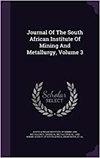用有限元方法对钛铁矿直流电弧炉内渣的凝固过程进行了数值研究
IF 0.9
4区 材料科学
Q3 Materials Science
Journal of The South African Institute of Mining and Metallurgy
Pub Date : 2023-04-14
DOI:10.17159/2411-9717/1247/2023
引用次数: 0
摘要
采用半径为5m的直流电弧钛铁矿炉空转模式的有限元模型,验证了炉渣在与较冷的生铁接触时凝固的概念,这是在炉渣-生铁界面形成固体炉渣的第一步。结果表明,当炉渣比生铁温度高150℃时,在界面处不会凝固。炉渣和生铁之间150℃的温差是由于固体渣在炉渣-生铁界面处造成的,而不是文献中提出的相反的结果。计算表明,该炉在炉渣-生铁界面处的冻渣厚度为1.7 cm。提出炉渣凝固始于炉渣与生铁在炉外缓慢共流。这为熔渣与熔体生铁相互作用而不凝固提供了足够的时间。由于炉渣被生铁中的碳还原而形成还原产物,炉渣凝固。这种方法只需要与本质上较冷的生铁接触,就不需要炉渣固化。利用炉渣和生铁之间的低热接触电导,可以在数值上捕捉炉渣-生铁界面上固体渣的存在,并保持炉渣和生铁之间150°C的相差。本文章由计算机程序翻译,如有差异,请以英文原文为准。
Numerical investigation into slag solidification inside an ilmenite DC arc furnace using a finite element method approach
A finite element model of a 5 m radius DC arc ilmenite furnace in idling mode was used to test the notion that the slag solidifies when it comes in to contact with colder pig iron, thus constituting the initial step in the formation of solid slag at the slag-pig iron interface. It was found that a slag that is 150°C hotter than the pig iron does not solidify at the interface. The 150°C temperature difference between the slag and pig iron is a result of solid slag at the slag-pig iron interface, not the other way around as suggested in the literature. Calculations show that the thickness of the frozen slag at the slag-pig iron interface is 1.7 cm for the furnace used. It is proposed that slag solidification begins with the slow co-current flow of molten slag and pig iron in the outer parts of the furnace. This provides enough time for molten slag to interact with molten pig iron without solidifying. As the reduction products form due to reduction of the slag by carbon in the pig iron, the slag solidifies. This approach negates the need for the slag to solidify by merely coming into contact with an inherently colder pig iron. Making use of a low thermal contact conductance between the slag and pig iron was found to be sufficient to numerically capture the presence of solid slag at the slag-pig iron interface and to preserve the 150°C difference between the slag and pig iron phase.
求助全文
通过发布文献求助,成功后即可免费获取论文全文。
去求助
来源期刊
CiteScore
1.50
自引率
11.10%
发文量
61
审稿时长
4-8 weeks
期刊介绍:
The Journal serves as a medium for the publication of high quality scientific papers. This requires that the papers that are submitted for publication are properly and fairly refereed and edited. This process will maintain the high quality of the presentation of the paper and ensure that the technical content is in line with the accepted norms of scientific integrity.

 求助内容:
求助内容: 应助结果提醒方式:
应助结果提醒方式:


